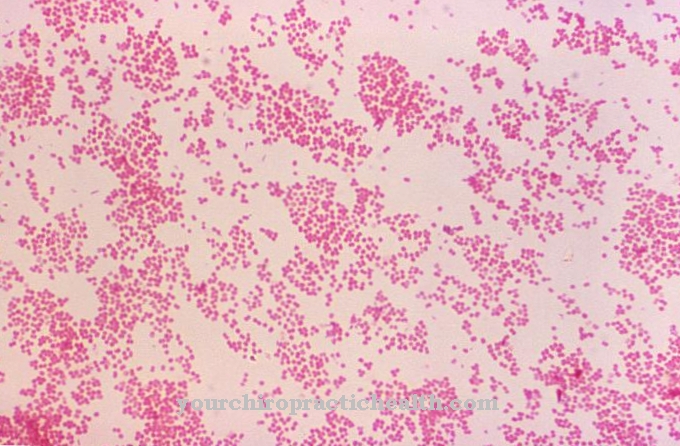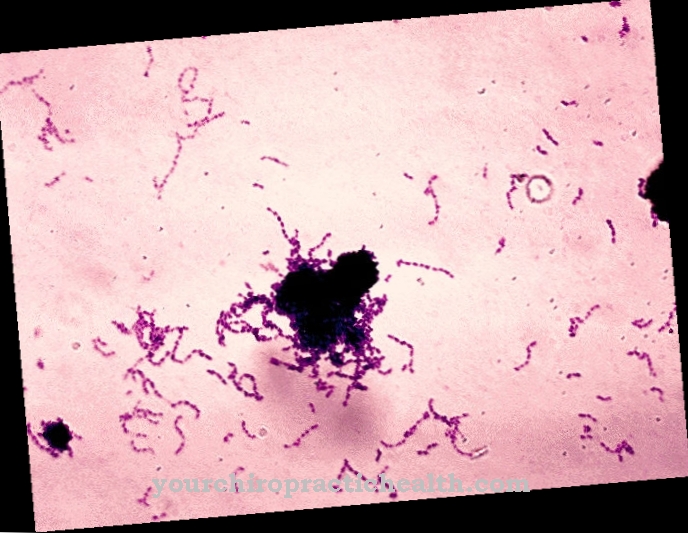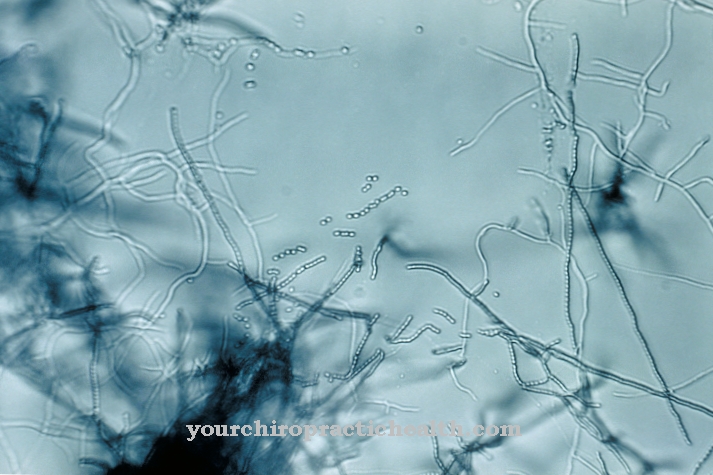At the Bacillus subtilis it is a single cell that occurs naturally in the uppermost layer of the earth. Pharmacy uses Bacillus subtilis in antibiotics, for example to treat gonorrhea.
What is the Bacillus subtilis?
The Bacillus subtilis is also called Hay bacillus known. Christian Gottfried Ehrenberg described the single-cell organism as early as 1835. The bacterium is rod-shaped and moves with the help of a scourge. The single cell moves the thread-like flagellum to move like a propeller.
Bacillus subtilis is an aerobic bacterium: its metabolism requires oxygen. Today, biology knows three subspecies with different properties. In addition, Bacillus subtilis is one of the endospores. An endospore is a capsule shape in which a bacterium can survive unfavorable living conditions. The spore is formed within the single cell. In Bacillus subtilis, a lack of food triggers the formation of the endospore. The bacterium is heterotrophic and has to take in nutrients that have been produced by other living things.
The decreasing availability of guanine serves as an indicator of food shortages. The guanine deficiency triggers a biochemical reaction in the bacterium. The cell wall divides within the bacterium and forms a bubble in the cell body. Encapsulated in it, the protozoa can survive unfavorable environmental conditions. Spores are particularly resistant to cold, heat, acid or base-heavy conditions, drought and radiation. When the living conditions for the Bacillus subtilis become more favorable again, the spore is activated and with the subsequent germination, the metabolism gradually starts up again. Finally, the Bacillus subtilis outgrows its protective shell and can now move and reproduce again undisturbed.
Occurrence, Distribution & Properties
The natural habitat of the Bacillus subtilis is the top layer of the earth. However, the bacterium is also found in the air or water. It finds particularly good growth conditions in compost soil. In autumn, when the leaves fall and the Bacillus subtilis supplies many nutrients, the bacterium appears in particularly high numbers.
As endospores, the Bacillus subtilis can survive longer periods of hunger and drought by retreating into a capsule. The bacterium can reproduce best at 40 ° C. At this temperature and with an adequate supply of oxygen, it divides once every 26 minutes.
For its nutrition, the Bacillus subtilis is dependent on other organisms that occur in the soil. Therefore it is not only found in the top layer of the earth, where it can find a particularly large number of nutrients. Bacillus subtilis also feels at home in the immediate vicinity of living roots - in the rhizosphere. As its main food, it prefers glucose (grape sugar), which plants produce through photosynthesis. The Bacillus subtilis also breaks down starch, which is made up of long chains with many sugar molecules. In this crushed form the micro-organism can process the glucose.
Meaning & function
Bacillus subtilis does not occur in the human body and therefore only has an indirect effect on health. The single cell is completely harmless. Unlike other bacteria, Bacillus subtilis does not cause disease, but can even help fight bacterial infections. However, not all strains of Bacillus subtilis can synthesize antibiotics.
Bacillus subtilis, for example, is contained in bacitracin (more rarely: bazitracin), which doctors used as an antibiotic as early as 1945. The mechanism of action of this drug is based on the fact that Bacillus subtilis inhibits the growth of other bacteria that are potentially harmful. Bacillus subtilis disrupts the synthesis of the cell walls. The cell wall which stabilizes and protects the cells of plants, fungi and some protozoa. The human body cells, on the other hand, do not have a cell wall because they are animal cells. Accordingly, the inhibitory effect of Bacillus subtilis on cell wall synthesis has no significance for human cells.
Illnesses & ailments
The antibiotic bacitracin, which contains spores of Bacillus subtilis, works against gram-positive bacteria, which owe their name to the reaction to a certain dye. In addition, Bacillus subtilis combats gonococci (Neisseria gonorrhoeae). These are bacteria that can lead to various infectious diseases in humans. The most common of these is gonorrhea.
This sexually transmitted disease is also popularly known as gonorrhea and is a common occurrence. Around 1% of the world's population suffers from gonorrhea. Gonococcal infection often does not cause symptoms in women. However, if the infection is visibly manifest, discharge and pain when urinating are characteristic signs. In addition, in some cases the urethra secretes purulent secretions.
If the gonococci in women spread further into the body through the ureter, adnexitis may occur. This is an inflammation of the appendages (adnexa). Usually fallopian tubes and ovaries are affected.In extreme cases, this can result in infertility. There is also a risk of abortion if the amniotic sac is also affected by the inflammation.
In men, gonorrhea is an inflammation of the lining of the urethra (urethritis), which secretes pus and causes pain. The infection can also increase in men, possibly leading to inflammation of the prostate (prostatitis) or inflammation of the epididymis (epididymitis). There is also a risk of becoming sterile.


.jpg)






















.jpg)


